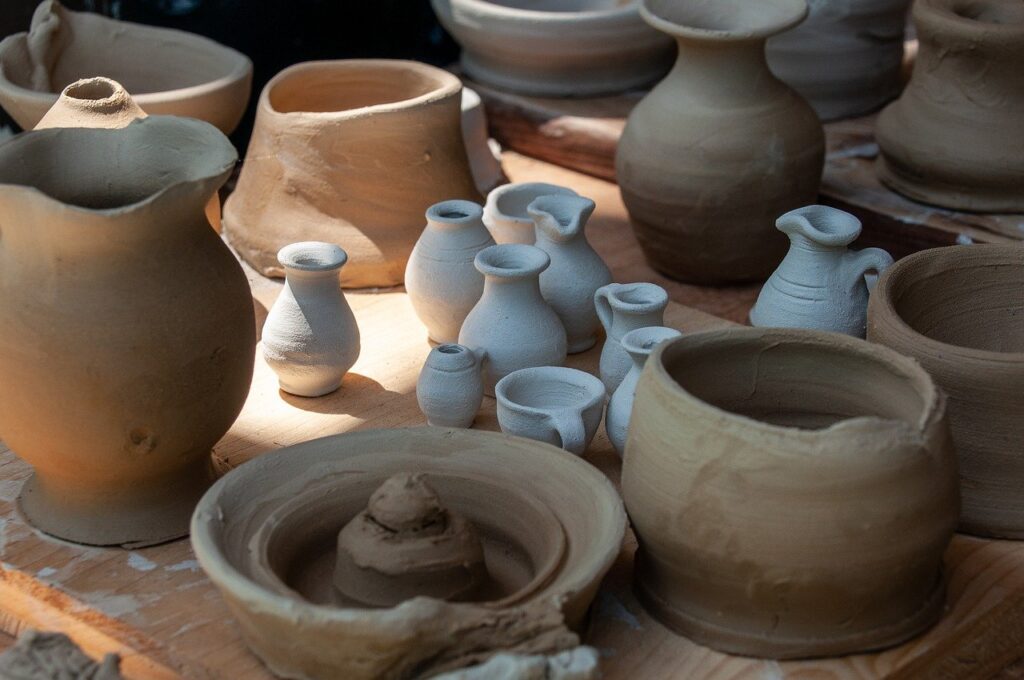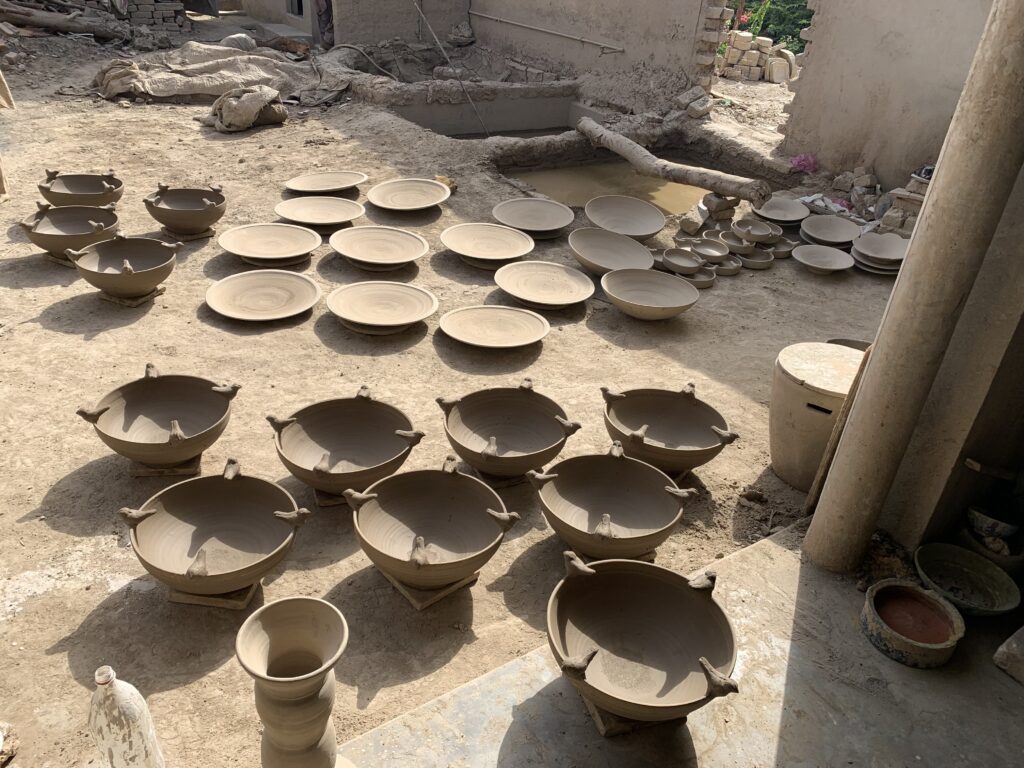
Kashikari, also known as “Kashi” or “Kashan” work, is a celebrated form of tile work and decorative art that has been an integral part of the cultural and architectural heritage of Pakistan and the Indian subcontinent for centuries. This intricate and colorful art form traces its roots to ancient Persia, from where it journeyed across Central Asia and eventually made its way to the Mughal Empire in the Indian subcontinent, where it flourished and evolved into a distinct style.
Origins and Evolution
The word “Kashikari” is derived from “Kashan,” a city in Iran known for its exceptional ceramic and tile work. During the early Islamic period, Persian artisans were renowned for their skill in creating glazed tiles with intricate designs, vibrant colors, and calligraphic inscriptions. As these artisans traveled across the Islamic world, their techniques were disseminated, gradually merging with local traditions and materials.
The introduction of Kashikari to the subcontinent is closely associated with the Mughal Empire, which reigned from the early 16th to the mid-18th century. The Mughals, particularly Emperor Akbar, were great patrons of the arts and architecture. They invited Persian craftsmen to their court, who brought with them the techniques and aesthetic sensibilities of Persian tile work. Under the Mughals, Kashikari became an essential element in the decoration of mosques, palaces, mausoleums, and gardens.

Kashikari in Mughal Architecture
The Mughal period marked the zenith of Kashikari art in the subcontinent. The tiles were meticulously crafted, often featuring floral patterns, arabesques, and geometric designs that echoed the grandeur of the Mughal aesthetic. The famous Wazir Khan Mosque in Lahore, built during the reign of Shah Jahan, is a stunning example of Kashikari art. The mosque’s walls and minarets are adorned with vibrant tiles that depict a blend of Persian and local motifs, showcasing the fusion of cultural influences that define the art form.
Kashikari tiles were not only decorative but also served practical purposes. The glazed surfaces of the tiles provided protection against the harsh climate, particularly in regions with extreme temperatures. The reflective properties of the tiles also enhanced the play of light within the architectural spaces, creating a mesmerizing visual effect that added to the spiritual atmosphere of the buildings.
The Decline and Revival of Kashikari
The decline of the Mughal Empire and the subsequent rise of British colonial rule in the 18th and 19th centuries led to a reduction in royal patronage for traditional arts, including Kashikari. The art form suffered as local artisans struggled to maintain their livelihoods and the traditional techniques were gradually forgotten.
However, Kashikari did not disappear entirely. In Pakistan, particularly in the provinces of Punjab and Sindh, the tradition of Kashikari was preserved, albeit on a smaller scale. The shrines of Sufi saints, such as the Shrine of Shah Rukn-e-Alam in Multan and the Shrine of Abdullah Shah Ghazi in Karachi, continued to be adorned with Kashikari tiles, reflecting the enduring cultural significance of the art form.
In recent decades, there has been a renewed interest in reviving Kashikari as part of Pakistan’s cultural heritage. Efforts by government institutions, NGOs, and individual artisans have led to the restoration of historical sites and the training of a new generation of craftsmen. Today, Kashikari is celebrated not only as a link to the past but also as a symbol of the rich artistic traditions that continue to inspire contemporary design and architecture in Pakistan.
Conclusion
Kashikari art is more than just a decorative practice; it is a testament to the rich cultural exchange and artistic evolution that has shaped the heritage of Pakistan and the subcontinent. From its origins in Persia to its flourishing under the Mughals and its enduring presence in modern times, Kashikari remains a vibrant and cherished art form that continues to captivate and inspire. Its intricate designs and vibrant colors tell the story of a region’s history, spirituality, and artistic excellence, making it an invaluable part of the cultural mosaic of Pakistan and the wider subcontinent.
